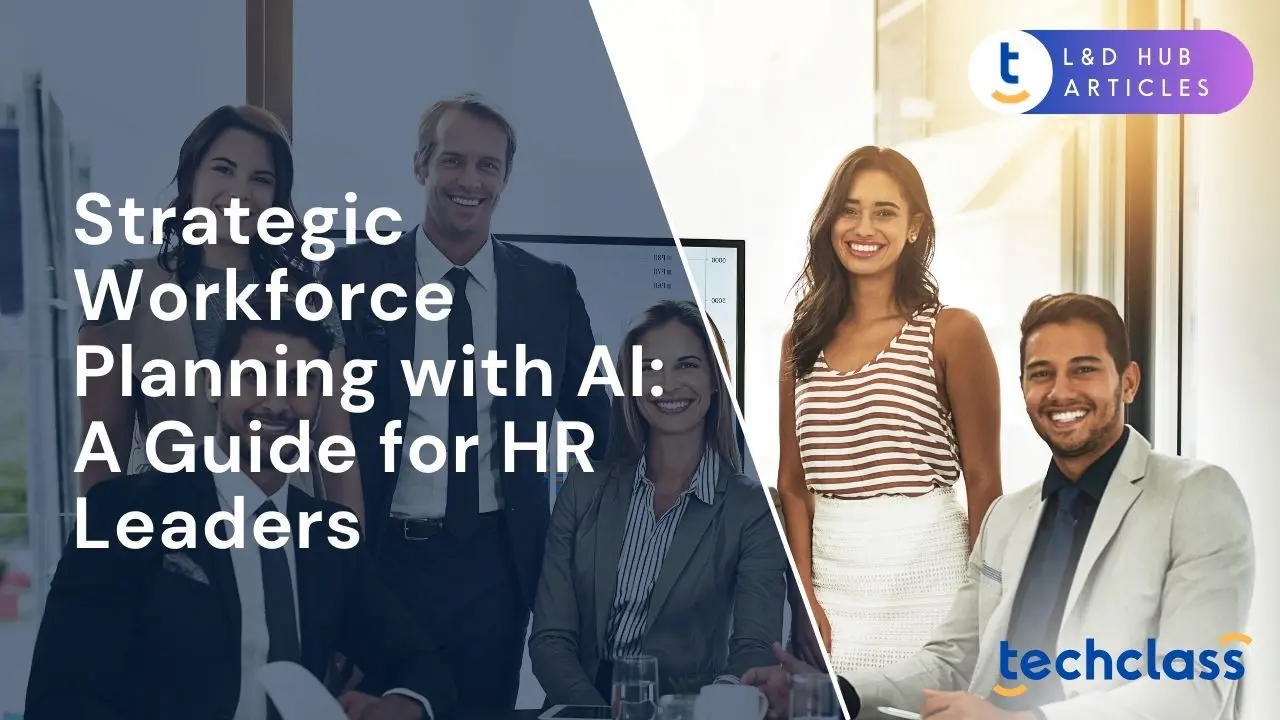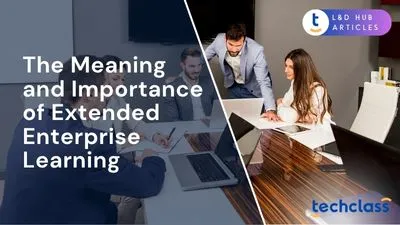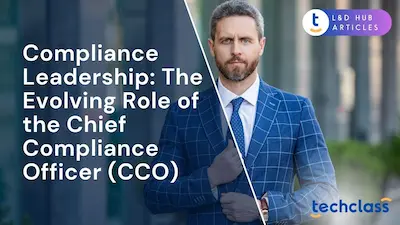
In an age of rapid technological change, organizations can no longer rely on traditional workforce planning methods. Artificial intelligence (AI) is reshaping how we work, and HR leaders are under pressure to anticipate evolving talent needs. Strategic workforce planning (SWP), the practice of aligning an organization’s talent with its business goals over the long term, has become more critical than ever. Forward-thinking companies take a proactive 3–5 year view of talent supply and demand, ensuring they have the right people with the right skills at the right time. Effective SWP offers greater agility and data-driven insight, helping businesses forecast capability gaps and identify upskilling or recruitment needs before challenges arise.
AI is emerging as a powerful ally to elevate this strategic process. Why? AI systems can process vast amounts of workforce data, uncover patterns, and generate forecasts far beyond human capacity. In fact, up to 30% of current work hours could be automated by 2030, according to McKinsey, underscoring the upheaval in skills and roles that lies ahead. Rather than viewing AI only as a disruptor, leading HR professionals see it as an enabler for smarter planning. AI-driven analytics can help predict future skill requirements, optimize talent deployment, and even suggest whether to fill gaps with new hires, internal development, contractors, or automation. It’s no surprise that 80% of organizations are projected to use AI for workforce planning by 2025. This guide will explore how HR leaders, CISOs, business owners, and executives across industries can harness AI for strategic workforce planning, covering the fundamentals of SWP, the role and benefits of AI, implementation steps, challenges to address, and real-world examples.
Strategic workforce planning is a systematic process of aligning an organization’s workforce capabilities with its long-term business objectives. Unlike reactive staffing or annual headcount exercises, SWP is continuous and forward-looking, companies anticipate multiple future scenarios and prepare talent strategies accordingly. This means identifying the critical tasks and skills needed to achieve strategic goals and determining how to secure those skills, whether through developing existing employees, hiring new talent, engaging contractors, or leveraging technology. As many organizations embrace automation and digital transformation, AI training has become essential to help employees adapt and leverage emerging technologies effectively. The approach is inherently cross-functional: HR collaborates with finance and business units to ensure talent plans support growth forecasts and operational needs. When done well, strategic workforce planning provides a data-driven “talent roadmap,” enabling organizations to make informed decisions about recruitment, training, succession planning, and organizational design.
The importance of SWP is evident in its impact. Research indicates that companies excelling at talent planning reap significant performance benefits, for instance, top performers that rigorously manage their human capital generate substantially higher revenue per employee than peers. Many organizations also report tangible cost savings from effective workforce planning. By minimizing unwanted attrition, avoiding overstaffing, and improving resource allocation, SWP initiatives can save about 10% of annual labor costs on average. However, despite its clear benefits, SWP remains an area of opportunity for most firms. In one survey, 92% of HR professionals said workforce planning is important, yet only 42% felt their organizations are effective at it. Similarly, Deloitte found only 11% of organizations have achieved a high level of maturity in their workforce planning approach. These gaps underscore why HR leaders need better tools and insights, and this is exactly where AI can make a difference.
AI is transforming workforce planning by enabling HR teams to analyze data, model scenarios, and make decisions with unprecedented speed and insight. Traditional workforce planning often relies on static spreadsheets and historical trends; in contrast, AI-powered planning leverages advanced analytics and machine learning to dynamically forecast talent needs under various scenarios. For example, AI algorithms can examine years of HR data (hiring patterns, turnover rates, retirement projections, performance metrics, etc.) alongside external labor market trends to predict future staffing requirements with far greater accuracy. Rather than planning in the dark, organizations can use AI to answer complex questions like “How will the rise of automation impact our software engineering needs in five years?” or “Which skill gaps pose the biggest risk to our growth strategy?”
One major shift is the use of predictive analytics. AI systems digest huge datasets to identify patterns and leading indicators, such as early warning signs of employee attrition or emerging skill shortages, allowing HR to act proactively. For instance, machine learning models can forecast which roles are likely to see increased demand or turnover, so companies can start recruiting or reskilling in advance. AI can also perform scenario modeling: HR can input potential business changes (a new product line, market expansion, or economic shifts) and let AI simulate the talent implications under each scenario. This helps leaders visualize multiple “what-if” situations and prepare contingent workforce strategies.
Importantly, AI broadens the scope of workforce planning by incorporating both internal and external data. In the past, plans were based mostly on internal HR metrics. Now, AI tools pull in outside information like industry hiring trends, demographic shifts, and even competitor job postings. For example, IBM uses AI-driven analytics to scrape job market data and compare it with its internal skills inventory, revealing where demand for certain skills is rising. This outside-in view makes planning more robust. Moreover, as organizations deploy AI “agents” or automation in operations, workforce planning must account for digital labor alongside human employees. Companies are increasingly asking: should a given task be handled by hiring new staff, upskilling current employees, or by an AI-driven system? Progressive HR leaders are expanding their strategies to include this “build, buy, borrow, or bot” decision framework, in which AI is considered as an alternative or complement to human talent. In essence, AI is both a catalyst for workforce planning (by changing the nature of work) and a tool to execute it better. Little wonder that adoption is accelerating, 63% of companies already use AI tools for workforce management, and by 2025 an estimated 60% of HR departments will be using AI in some capacity. HR leaders who leverage these technologies gain a strategic advantage in agility and foresight.
Integrating AI into workforce planning offers numerous benefits for organizations looking to stay competitive and agile. Key advantages include:
Overall, AI-powered workforce planning leads to a smarter allocation of human capital. It enables organizations to be anticipatory rather than reactive, balancing talent supply and demand with a precision and foresight that yields strategic advantage. Employees also benefit from clearer development pathways and a workforce that is neither overworked nor under-utilized. The result is a more resilient organization ready to navigate the future of work.
Adopting AI for strategic workforce planning requires more than just new software, it involves thoughtful integration of technology, people, and processes. HR leaders can follow these best practices to successfully implement AI in workforce planning:
1. Get the Fundamentals in Place: Before layering AI on top of existing processes, ensure you have a solid foundation. This means a clear workforce planning strategy and governance, a well-defined job architecture (roles, competencies, career paths), and high-quality data. AI is only as good as the data you feed it, so consolidate HR data from various sources (HRIS, talent management systems, performance reviews, etc.) and clean up inconsistencies. Identify key metrics and define what “success” looks like in workforce terms (e.g. optimal staffing levels, turnover targets). Having a skills-based framework in place is particularly important; for AI to analyze skills gaps, the organization must catalog current employee skills in a structured way. In short, match the technology to your organization’s maturity, if your HR data is chaotic or roles are unclear, focus on fixing those basics first.
2. Align AI Initiatives with Business Strategy: Treat AI-driven workforce planning as a strategic initiative, not just an HR experiment. Begin by identifying critical business objectives (such as expanding into new markets, launching products, or improving customer service) and determine what talent capabilities those objectives demand. This ensures that any AI insights will be actionable and relevant. Involve senior leadership to champion the effort. For instance, collaborate with finance on financial forecasts and growth plans, finance can validate that workforce changes enabled by AI align with budget and growth objectives. Business unit leaders should also be engaged to verify that the AI’s talent recommendations (hiring, redeployment, etc.) make sense in operational context. By tightly linking AI workforce planning to strategic goals, HR can secure buy-in and demonstrate value early on.
3. Choose the Right Tools and Partners: There is a growing array of AI and analytics tools for HR, from predictive analytics platforms to AI-enhanced HRIS modules and custom data science models. Evaluate solutions based on your needs: Do you require advanced predictive modeling? Natural language processing to analyze resumes or employee feedback? Scenario simulation capabilities? Consider whether to build internal expertise (hiring data analysts or data scientists in HR) or partner with vendors/consultants who specialize in AI for talent management. Many enterprises start with pilot programs using a vendor platform or a limited-scope in-house project (for example, an AI model to predict attrition risk). Start small and demonstrate success, then scale up. Ensure any tool you adopt can integrate with your existing HR technology stack and has robust data security measures (to protect sensitive employee information).
4. Upskill the HR Team: Integrating AI into workforce planning will transform the HR team’s roles and required skills. It’s crucial to develop your HR staff’s data literacy and analytical capabilities. Provide training so that HR professionals can interpret AI-generated reports, understand basic concepts of machine learning, and ask the right questions of the data. This might involve workshops on people analytics, hiring or assigning HR data analysts, or embedding HR business partners with analytics teams. When HR team members feel comfortable with the technology, they can better translate AI insights into actionable workforce plans. At the same time, cultivate a culture of curiosity and continuous learning in HR, encourage the team to experiment with data and question assumptions. This cultural shift helps HR move from a transactional function to a more strategic, evidence-driven partner.
5. Ensure Ethical and Secure Use of AI: With great power comes great responsibility. Workforce data often includes personal and sensitive information, so any AI use must comply with privacy regulations and ethical standards. Work closely with your CISO and IT security teams to vet AI tools for security vulnerabilities and to establish protocols on data usage (e.g. encryption, access controls). Implement governance policies for AI decisions: define what decisions AI is allowed to make or recommend and where human judgment is required. For example, you might use AI to identify candidates for a role, but still have humans conduct interviews and make final hiring decisions to ensure a holistic assessment. Address potential bias by auditing your AI models, check if recommendations disproportionately favor or disfavor certain groups. If biases are detected, adjust the algorithms or input data (for instance, remove variables that correlate with protected characteristics). Some organizations set up AI ethics committees or similar oversight to regularly review the impact of AI on employment decisions. Transparency is key: communicate to employees how AI is being used in planning and decision-making. This builds trust and prevents misunderstandings or fear of “black box” algorithms.
6. Foster Collaboration and Change Management: Introducing AI into workforce planning is as much about change management as technology. Proactively involve stakeholders across the organization. As noted, engage finance and operations early, workforce planning must be a team sport with input from multiple departments. Also involve employee representatives or managers from different levels to get practical insights. Clearly explain to all stakeholders the goals and benefits of the AI initiative (e.g. “This will help us forecast staffing needs better so we can avoid layoffs or fire drills.”). Manage expectations, AI will enhance decision-making, not perfectly predict the future. It’s important that managers understand the AI outputs are recommendations to inform their judgment, not absolute directives. Providing some basic AI education to business leaders can help them trust and effectively use the new tools. Finally, celebrate quick wins. If your pilot accurately predicted a hiring need that saved the company money or if an AI-driven reskilling program filled a critical role internally, share that story. Early successes build momentum and buy-in for wider adoption.
7. Monitor, Evaluate, and Iterate: Implementing AI in workforce planning is not a one-off project but a continuous improvement journey. Establish metrics to evaluate the impact, for example, forecast accuracy, reduction in time to fill roles, improvement in retention, or cost savings achieved. Regularly review these metrics and get feedback from users (HR team, managers) on how the system is working. Expect to refine models and processes over time. Perhaps the predictions are off in one department due to unique factors, dig in and adjust the model. Or maybe managers are overwhelmed by too much data, refine dashboards to highlight key insights. Treat the AI like a living tool that learns and gets better. Also stay abreast of new AI advancements. The technology is evolving quickly (e.g. the rise of generative AI tools that can draft job descriptions or answer employees’ career questions). Be ready to incorporate new features that add value, but also be mindful of their risks. Continuous learning and adaptation will ensure that your AI-powered workforce planning remains cutting-edge and effective.
By following these best practices, HR leaders can integrate AI smoothly into their strategic planning efforts. The result is a balanced approach: leveraging the speed and analytical power of AI while relying on human judgment for context, empathy, and final decision-making. This combination positions organizations to get the best of both worlds in workforce planning.
Adopting AI for workforce planning brings tremendous benefits, but it also comes with challenges that organizations must navigate carefully. Being aware of these considerations will help HR leaders mitigate risks and set the stage for success:
By anticipating these challenges and addressing them head-on, organizations can greatly increase the chances of a successful AI-driven workforce planning initiative. The common thread is responsibility, using AI thoughtfully, with safeguards and human oversight in place. Those who manage this balance will reap the rewards of AI while maintaining the trust and well-being of their employees.
To illustrate how AI can enhance workforce planning, consider these real-world examples from different contexts:
Each of these examples demonstrates AI’s potential to solve classic workforce planning challenges: ensuring the right staffing in real time, maximizing utilization of talent, and understanding workforce capabilities at a granular level. Organizations in other industries, from retail (using AI to predict seasonal hiring needs) to finance (using AI to anticipate retirement waves in an aging workforce), are similarly experimenting with AI solutions. The common theme is that AI provides timely, actionable insight that enables better decisions. While results will vary by context, these cases offer inspiration for HR leaders looking to innovate their own workforce planning with AI.
As AI technology continues to advance, its role in workforce planning is poised to expand even further. Looking ahead, several trends are likely to shape the future of AI-driven workforce strategy:
In summary, AI is set to become an indispensable component of workforce planning, evolving the practice from a periodic, manual exercise to a dynamic, continuous, and highly strategic function. Organizations that keep pace with these trends will be better positioned to navigate labor market fluctuations, technological disruptions, and competitive pressures. The core mission of workforce planning, getting the right talent in place to execute business strategy, will remain, but how we achieve it will be fundamentally transformed by AI.
AI is not a magic wand for workforce challenges, but it is a game-changing tool that empowers HR leaders and executives to plan more effectively in an uncertain world. Embracing AI in strategic workforce planning is ultimately about combining human wisdom with machine intelligence. Humans bring the vision, business context, and ethical judgment; AI contributes speed, data depth, and predictive power. Together, they form a potent combination. As we’ve discussed, organizations that leverage AI for workforce planning can anticipate talent needs with greater confidence, respond agilely to change, and create more value from their human capital. They can also foster a more future-ready workforce, one where employees are continually developing the skills needed for tomorrow’s opportunities, supported by data-driven insights.
For HR professionals, CISOs, and business leaders, the journey toward AI-augmented workforce planning involves preparation and care: building solid data foundations, addressing challenges like bias and privacy, and nurturing a culture that trusts and understands technology. It’s a journey of incremental wins and learning. But the payoff is significant. In an era when the only constant is change, whether due to AI, economic shifts, or global events, organizations that plan ahead will always have the edge. AI is helping transform workforce planning from a tactical HR task into a strategic differentiator.
By embracing these tools thoughtfully, leaders can ensure that their people strategy keeps pace with their business strategy. In doing so, they not only protect their organizations against talent shortages and disruptions but also unlock the full potential of their workforce. The message is clear: those who plan for the future of work will thrive in it. AI provides the means to plan smarter and more boldly. The onus is now on today’s HR and enterprise leaders to seize this opportunity, to lead with foresight, champion the responsible use of AI, and ultimately, secure the talent foundations for sustained success in the AI era.
Strategic workforce planning is the process of aligning an organization’s talent with long-term business goals. It helps ensure the right people with the right skills are in place to meet future needs, improving agility, reducing costs, and supporting sustained growth.
AI enhances workforce planning by analyzing vast amounts of internal and external data, predicting future talent needs, identifying skill gaps, and enabling real-time scenario modeling. This allows organizations to plan proactively rather than reactively.
Benefits include more accurate forecasting, proactive skill gap identification, optimized talent deployment, cost savings, unbiased data-driven decisions, and the ability to adjust plans quickly in response to changes.
Key challenges include data privacy and security, potential bias in algorithms, change management, integration with existing systems, data quality issues, and ensuring regulatory compliance.
Yes. IBM uses AI to analyze employees’ work histories, projects, and training to infer skill profiles. This enables accurate internal talent matching, better reskilling strategies, and unbiased decision-making.


